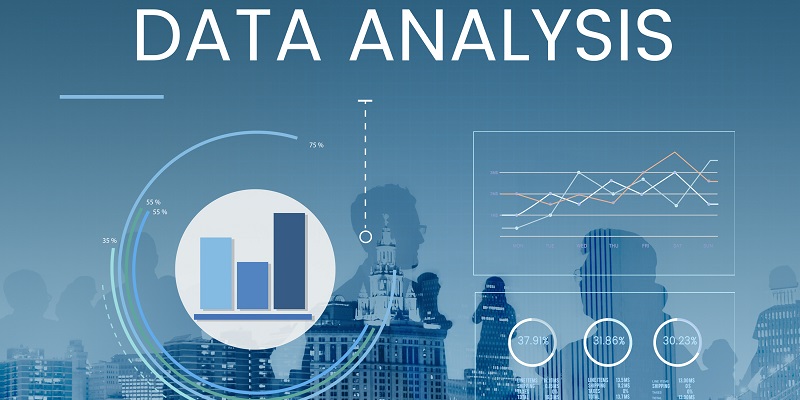In today’s data-driven world, organizations must harness the power of AI-driven data analysis to gain valuable insights, make informed decisions, and stay ahead of the competition. As we dive into this transformative field, it is crucial to approach AI with clear objectives and a strategic roadmap. By leveraging the right tools, addressing data quality concerns, exploring various AI models, automating repetitive tasks, fostering collaboration, ensuring model retraining, enhancing stakeholder understanding, prioritizing security, and monitoring ROI, businesses can unleash the full potential of AI-driven data analysis.
Defining clear objectives for AI-driven data analysis
Before embarking on any AI initiative, it is essential to define clear objectives. Identify specific problems or opportunities that can benefit from AI-driven insights. This involves understanding business goals, enhancing decision-making processes, optimizing operational efficiency, and improving customer experiences. Clearly defined objectives will guide the selection and implementation of AI tools and technologies.
Selecting the appropriate AI tools and technologies
With an abundance of AI tools and technologies available, it is crucial to choose the right ones that align with your objectives. Consider factors such as scalability, ease of integration, robustness, and compatibility with existing systems. Machine learning algorithms, neural networks, natural language processing, and deep learning frameworks are examples of AI technologies that can support data analysis tasks. Informed selection ensures optimal performance and accuracy in deriving insights from complex datasets.
Avoiding the “garbage in, garbage out” (GIGO) problem in AI data analysis
While AI has the potential to uncover hidden patterns and make accurate predictions, its effectiveness heavily relies on the quality of data. “Garbage in, garbage out” is a common pitfall in AI data analysis. Ensure that the data used is comprehensive, relevant, and properly organized. Data cleansing and preprocessing techniques help eliminate inconsistencies, errors, and biases, thereby improving the quality of inputs for AI models.
Exploring different AI models for optimal data analysis
Every dataset and problem scenario is unique, and no single AI model fits all. Experiment with various AI models to find the best approach for your data analysis needs. Consider supervised learning, unsupervised learning, reinforcement learning, or a combination thereof. Do not hesitate to fine-tune and optimize AI models based on performance evaluation metrics such as accuracy, precision, recall, and F1 score. Continuous exploration enables organizations to extract meaningful insights from complex and diverse datasets.
Leveraging AI to automate repetitive data analysis tasks
One of AI’s greatest benefits is its ability to automate repetitive and time-consuming data analysis tasks. Data preprocessing, feature selection, anomaly detection, and report generation can all be automated, freeing up valuable time for data scientists and analysts to focus on high-value activities. By leveraging AI technology, businesses can improve operational efficiency, reduce human error, and accelerate decision-making processes.
Collaboration between data scientists, analysts, and domain experts
AI-driven data analysis is most effective when interdisciplinary collaboration is encouraged. Close collaboration between data scientists, analysts, and domain experts allows for a holistic understanding of business objectives and domain-specific considerations. Domain experts provide valuable insights, while data scientists and analysts bring their technical expertise to design and build accurate AI models. This collaborative approach ensures that AI models align with the organization’s goals and are applied appropriately to generate actionable insights.
Implementing a system for model retraining
To maintain the effectiveness and accuracy of AI-driven data analysis, continuous model retraining is essential. As new data becomes available or business dynamics change, AI models must adapt. Implementing a system that monitors model performance, triggers retraining processes, and reevaluates models against evolving business needs ensures that AI insights remain relevant, reliable, and impactful over time.
Ensuring understandable AI-driven insights for stakeholders
While AI models may be complex, it is crucial to communicate their outputs in a clear and understandable manner to stakeholders. Use visualization techniques, clear explanations, and concise summaries to present insights. Stakeholders, including non-technical decision-makers, should be able to grasp the significance and implications of AI-driven analyses. Transparency and interpretability build trust and confidence in AI-driven data analysis practices.
Implementing robust security measures and complying with data privacy laws
With the growing concerns surrounding data privacy and security, it is paramount to implement robust measures to protect sensitive data. Encrypting data, adopting strict access controls, and anonymizing personally identifiable information are essential steps. Ensure compliance with relevant data privacy laws, such as the General Data Protection Regulation (GDPR) or the California Consumer Privacy Act (CCPA). This demonstrates a commitment towards ethical and responsible use of AI in data analysis.
Continuously measuring ROI and improving AI strategies over time
Maximizing the benefits of AI-driven data analysis requires a constant focus on ROI. Establish clear metrics and analytics to measure the impact of AI initiatives. Evaluate the financial gains, operational efficiencies, and customer satisfaction achieved through AI-driven insights. Use these insights to iterate and improve AI strategies over time, ensuring alignment with evolving business objectives and ever-changing market dynamics.
By adhering to the best practices outlined above, organizations can unleash the transformative power of AI-driven data analysis. Clear objectives, appropriate tool selection, data quality management, model exploration, automation, collaboration, retraining, stakeholder understanding, security measures, and performance measurement are all crucial aspects of successful AI implementation. Embrace the potential of AI to uncover hidden patterns, gain valuable insights, and drive informed decision-making, placing your organization at the forefront of innovation and competitiveness in the data-driven era.

